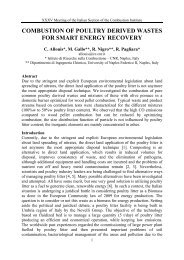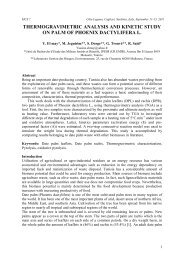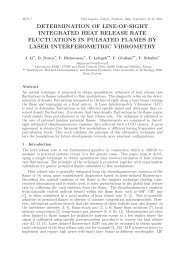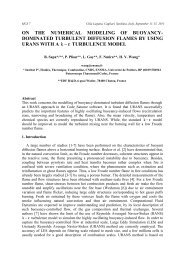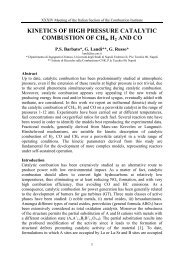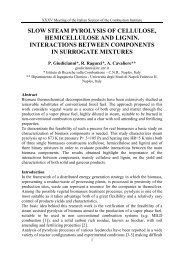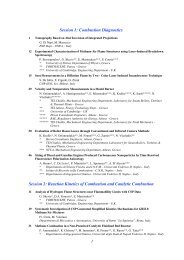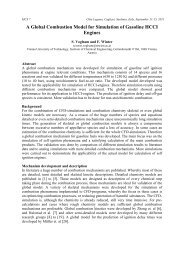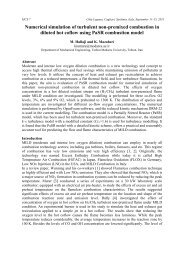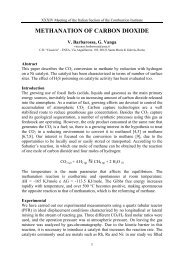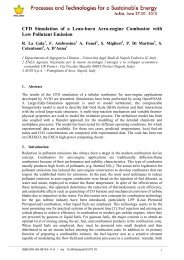RANS Study of Hydrogen-Air Turbulent Non-Premixed Flames
RANS Study of Hydrogen-Air Turbulent Non-Premixed Flames
RANS Study of Hydrogen-Air Turbulent Non-Premixed Flames
You also want an ePaper? Increase the reach of your titles
YUMPU automatically turns print PDFs into web optimized ePapers that Google loves.
Processes and Technologies for a Sustainable Energy<br />
duced to generate buoyancy-driven structures external to the flame. Once a vortex is developed it<br />
rolls along the flame surface while it is convected downstream. During this process, the vortex<br />
interacts strongly with the flame, making the flame surface bulge and squeeze. This motion is<br />
simulated by the time-dependent calculations.<br />
Fig. 5<br />
Comparison <strong>of</strong> computed hydrogen/air flames for fuel-jet velocity <strong>of</strong> 106 m/s: (a)<br />
instantaneous temperature contours <strong>of</strong> computed flame; (b) iso-temperature contours<br />
obtained from time-averaged flame; (c) iso-temperature contours <strong>of</strong> steady-state<br />
flame.<br />
Since the mean temperature reflects the time the flame spends at a given location, the<br />
presence <strong>of</strong> the first bulge indicates that the flame spends considerable time in the bulged<br />
position at an axial location between 110 and 140 mm. The isotherms in the interior <strong>of</strong> the jet<br />
(r < 5 mm) are only moderately affected by the dynamic motion <strong>of</strong> the outer structures, as<br />
evidenced by the similarity <strong>of</strong> the instantaneous (Fig. 5a) and averaged (Fig. 5b) isotherms.<br />
To illustrate the importance <strong>of</strong> simulating the dynamic flames using unsteady CFD codes,<br />
calculations were also performed for the same flame using the steady-state option <strong>of</strong><br />
FLUENT. Solution for this case converged to a flame having perfectly smooth surface. The<br />
iso-temperature visualization <strong>of</strong> the resulted flame is shown in Fig. 5c, which does not<br />
resemble either the instantaneous flame (Fig. 5a) or time-averaged flame (Fig. 5b).<br />
Fig. 6 Impact <strong>of</strong> outer and inner vortices on temperature for the flame shown in Fig. 5.<br />
Blowups <strong>of</strong> the two different vortex-flame interactions are shown insets.<br />
Vortex-flame interactions result in the presence <strong>of</strong> two types <strong>of</strong> vortices: one located on the<br />
fuel side <strong>of</strong> the flame and the other on the air side. Both types <strong>of</strong> vortices create positive<br />
(stretch) and negative (compression) stretch regions when interacting with the flame, as<br />
4



